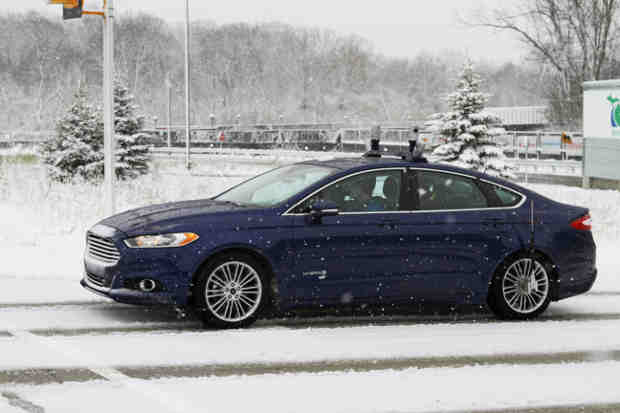Can Technology Help Autonomous Vehicles Run on Snow?
Ford is conducting the autonomous vehicle tests in snow-covered environments – a major step in the company’s plan to bring fully autonomous vehicles to customers worldwide.
Unlike other major automakers and technology companies, which have tested autonomous vehicle technology only in dry, mostly sunny climates, Ford says it knows the future of autonomous driving cannot rely on ideal conditions.
“It’s one thing for a car to drive itself in perfect weather,” said Jim McBride, Ford technical leader for autonomous vehicles. “It’s quite another to do so when the car’s sensors can’t see the road because it’s covered in snow. Weather isn’t perfect, and that’s why we’re testing autonomous vehicles in wintry conditions – for the roughly 70 percent of U.S. residents who live in snowy regions.”
[ Volvo and Ericsson Join Hands for Self-Driving Cars ]
Ford’s winter weather testing takes place in Michigan, including at Mcity – a 32-acre, full-scale simulated real-world urban environment at the University of Michigan.
Fully autonomous driving can’t rely on GPS, which is accurate only to several yards – not enough to localize or identify the position of the vehicle. And it’s key that an autonomous vehicle knows its precise location, not just within a city or on a road, but in its actual driving lane – a variation of a few inches makes a big difference.
LiDAR, on the other hand, is believed to be much more accurate than GPS – identifying the Fusion Hybrid’s lane location right down to the centimeter. LiDAR emits short pulses of laser light to precisely allow the vehicle to create a real-time, high-definition 3D image of what’s around it.
[ Ford Smart Mobility: What Exactly is FordPass? ]
In ideal weather, according to Ford, LiDAR is the most efficient means of gathering important information and metadata – underlying information about the data itself – from the surrounding environment, sensing nearby objects and using cues to determine the best driving path.
But on snow-covered roads or in high-density traffic, LiDAR and other sensors such as cameras can’t see the road. This is also the case when the sensor lens is covered by snow, grime or debris.
Undaunted by this challenge, Ford and University of Michigan technologists began collaborating toward a solution that would allow an autonomous vehicle to see on a snow-covered road.
To navigate snowy roads, Ford autonomous vehicles are equipped with high-resolution 3D maps – complete with information about the road and what’s above it, including road markings, signs, geography, landmarks, and topography.
Building on more than a decade of Ford autonomous vehicle research, this advancement is a key element of Ford Smart Mobility – the plan to take Ford to the next level in connectivity, mobility, autonomous vehicles, the customer experience, and data and analytics.














